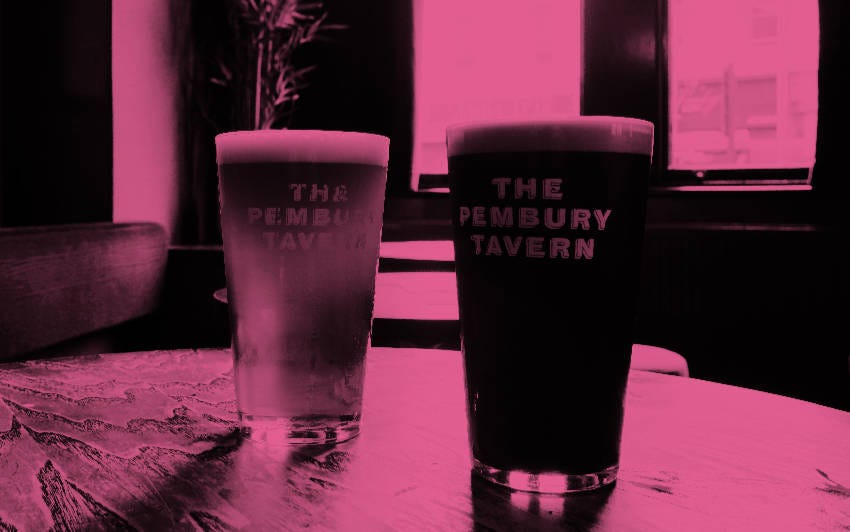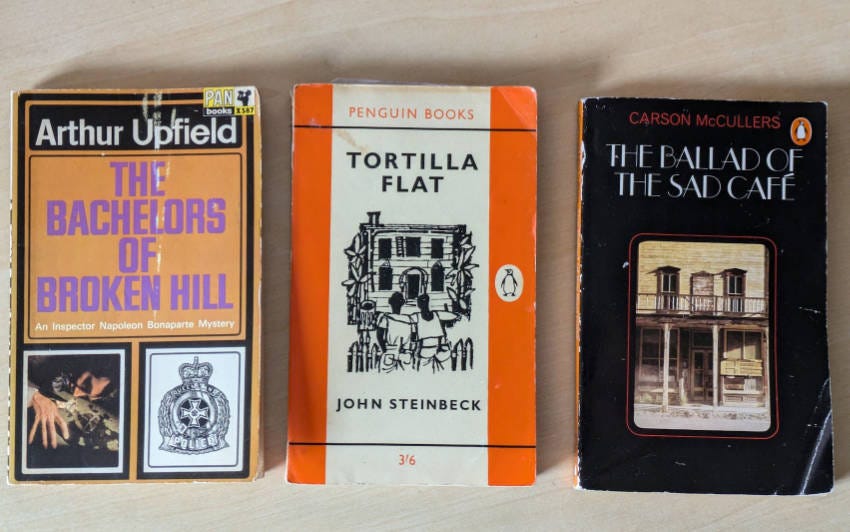Is the New English Bitter (NEB) a thing?
Privately we've started describing certain beers this way – those which walk a tightrope between past and present.
We’ve been pondering the existence of the New English Bitter (NEB) after encountering a few more beers that are definitely bitters (brown, clear, sessionable) but which would also stand out a mile if tasted blind against, say, cask Tetley, or Young’s Ordinary.
They’re distinctly ‘modern’, somehow, but not in that very obvious way of being intensely flowery or citrusy. They’re not hazy, piney, full of tropical fruit, or anything like that.
It’s just that they seem to have more bitterness, for one thing, and more ‘zing’ – flavours slightly dialled up and feeling somehow more alive.
In recent history (around when we started our blog) newer microbrewery bitters were often defined, and ruined, by too much crystal malt, driven by a misunderstanding that what made best bitters better was more brownness, more body, more chewy caramel.
The New English Bitter corrects this.
Five Points Best is the most obvious example. We’ve gone on about this beer at length in various places including, recently, on BlueSky, where we suggested it might be the best beer in London.
In its current incarnation (it’s changed over the years, and we didn’t used to like it) it is just on the orange or amber side of brown. It was a confident level of dry bitterness, juicy malt character, and some suggestion of oily orange peel.
In other words, there’s stuff to latch onto, rather than just thinking, shrug, it’s brown, innit? I dunno, tastes like beer. Sort of beery. Brownish.
Other examples we’ve enjoyed recently include Good Chemistry Ridge Hill (“It’s very English” said the barman, and it was) and Cheddar Crown & Glory. Both are also amberish and certainly somewhat citrusy, but with more tangerine than grapefruit.
When we asked on social media and on Patreon “Is New English Bitter a style?” the response was very much “Yes!”. And some other candidates were suggested:
Verdant Bissoe
Verdant Lamanva
Attic Gambol
Siren Memento
RedWillow Feckless
Twice Brewed Best Bitter
Salopian Darwin’s Origin
Track Brewing Daytime Hourglass
Twickenham Harlequin
Stardust English Bitter
Oakham JHB
Blackjack Best Bitter
Pomona Island Cruffatin
Abbeydale Daily Bread
We haven’t tried all of these beers ourselves so can’t say if they fit. And one or two beers that people suggested struck us as examples of pale-and-hoppy.
Our impression is that these are the result of a generation of brewers who grew up with bitter, rejected it as rebellious youths, but have come back to the style as they orbit 40. Perhaps we’re wrong.
Fuller's London Pride is oddly influential, we think. Or, at least, that one pint in ten that really impresses – the one that seems fresh, bright, and full of marmalade.
Maybe Timothy Taylor Landlord is also in the mix. It hardly deserves to be called brown and, again, at its best, has a ripe peachiness that you don’t find in many old skool bitters.
Memories or stories about Boddington’s too, perhaps? Marble Manchester Bitter might also be an example – although we haven’t drunk it in good condition recently.
And this is a weird one but is Batham’s Bitter a touchpoint? Jess in particular often finds herself reaching for this when writing tasting notes on NEBs. Because it’s bitter but different, in a way that’s hard to put into words, might be why.
When the New English Bitter goes wrong, it can be grassy, thin, unbalanced, and one dimensional. There’s nothing from the yeast (again, think Fuller’s) and it just ends up being a browner session IPA.
When it's right, though, it’s a clever tightrope walk between past and present.
Drink and hospitality in books recently read
“I've nothing against a man, or a woman, who doesn't drink, but I never trust anyone who doesn't drink, or smoke, or swear, or lose the old temper.”
Wally Sloan in The Bachelors of Broken Hill, Arthur Upfield, 1958
“Two gallons is a great deal of wine, even for two paisanos. Spiritually the jugs may be graduated thus: Just below the shoulder of the first bottle, serious and concentrated conversation. Two inches farther down, sweetly sad memory. Three inches more, thoughts of old and satisfactory loves. An inch, thoughts of old and bitter loves. Bottom of the first jug, general and undirected sadness. Shoulder of the second jug, black unholy despondency. Two fingers down, a song of death or longing. A thumb, every other song each one knows. The graduations stop here, for the trail splits and there is no certainty. From this point on anything can happen.” –
Tortilla Flat, John Steinbeck, 1935
“But the new pride that the café brought to this town had an effect on almost everyone, even the children. For in order to come to the café you did not have to buy the dinner, or a portion of liquor. There were cold bottled drinks for a nickel! And if you could not even afford that, Miss Amelia had a drink called Cherry Juice which sold for a penny a glass, and was pink-coloured and very sweet. Almost everyone, with the exception of Reverend T. M. Willin, came to the café at least once during the week. Children love to sleep in houses other than their own, and to eat at a neighbour's table; on such occasions they behave themselves decently and are proud. The people in the town were likewise proud when sitting at the tables in the café. They washed before coming to Miss Amelia’s, and scraped their feet very politely on the threshold as they entered the café. There, for a few hours at least, the deep bitter knowing that you are not worth much in this world could be laid low.”
‘The Ballad of the Sad Cafe’, Carson McCullers, 1953
Some encouraging signs around blogging
Blogging beats social media because it allows you to explore a thought – to dig a little deeper into your argument, and into the arguments that surround it. And it encourages slower, longer, more thoughtful conversations.
We’re pleased to see that Matthew Curtis has started blogging again at Total Ales and one of his recent posts has already provoked a response from us. It gave us something to think about and to respond to. Something substantial to chew upon.
It’s also been great to see an article from Dave Infante prompting a blog post from Stan Hieronymous prompting a blog post from Jeff Alworth, and so on.
Just to be clear, we love it when people write blog posts inspired by our blog posts. Whether they agree, disagree, or take one of our thoughts and spin out from it, it’s always really pleasing to know we’ve contributed to making a conversation happen.
One thing blogging is better at than social media is linking. Old skool blogging thrived on the practice of generous linking. Sometimes, it was about search engine optimisation (SEO) – which is no bad thing when it helps good stuff rise to the top of search results.
But mostly it gave readers a chain to follow. We used to spend ages following links from one blog post to another when we were first learning about beer. A sort of Choose Your Own Adventure approach to study.
Blogs are also more stable and more independent. They’re less likely to suffer from an egotistical investor buying up, damaging, or shutting down a platform.
With a blog, you have your own space to do your own thing.
On our blog in the past month
We’ve already mentioned this above but, just for completeness, we responded to a question from Matt Curtis: why aren’t there more beer critics?
We wrote about four new-to-us classic London pubs including one with massive warplanes dangling from the ceiling.
Following up on the re-opening of The Crown in Bristol we marvelled at its new Bass Club – a loyalty card scheme for Bass drinkers – and wondered if, genuinely, Bass might be a hype beer to watch for 2025. (Hilariously, someone suggested we’d been bribed to write this post, as if AB-InBev would ever invest anything in promoting Bass.)
We wrote about what a great fit old vinyl records are for pubs: “The magic that people perceive in cask ale is similar to the magic they perceive in pub buildings which is similar to the magic they perceive in the sound of vinyl. A sense of connecting with something authentic… They’re also essentially nostalgic. Most pubs are embassies of the past.”
We kept up with our regular Saturday morning links round-ups, even though we had to put two of them together from hotel rooms in Berlin and Cologne respectively.
And if you want to know where we went and what we got up to on holiday in Germany, Poland and Belgium, well, there’ll be some blog posts, but check out BlueSky where we shared photos and thoughts as we went.
And that’s it, that’s your lot, until next month.
Cheers!
Jess & Ray









Well done for not saying "twiggy" at any point in the Bitter bit!